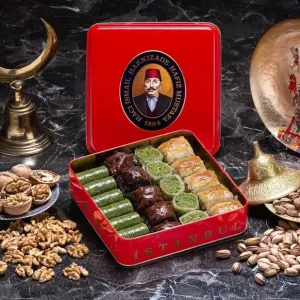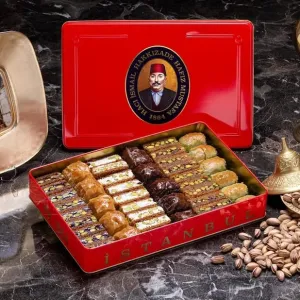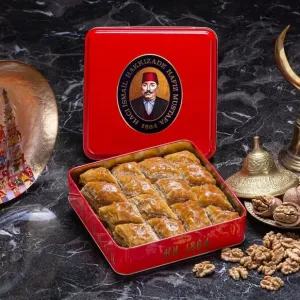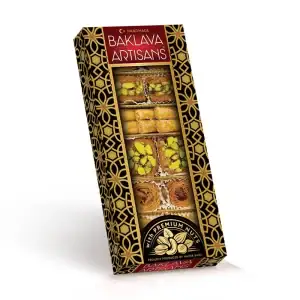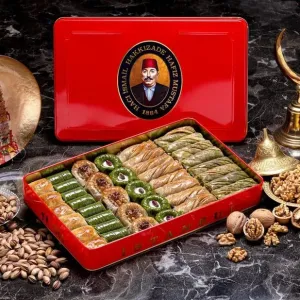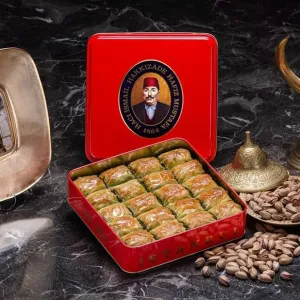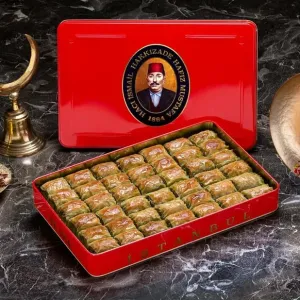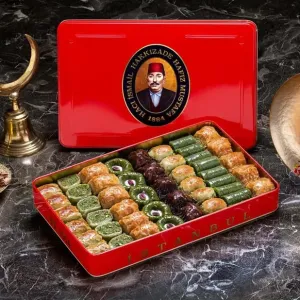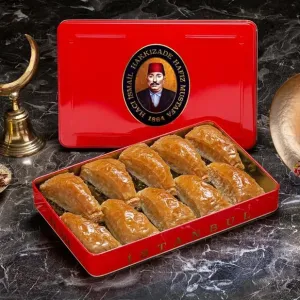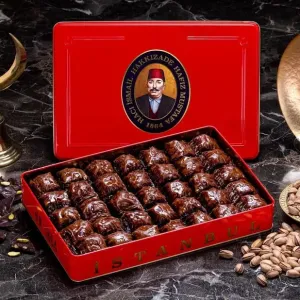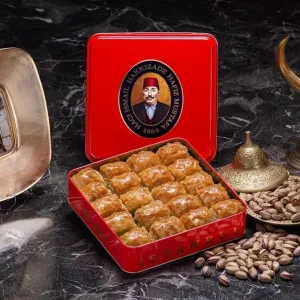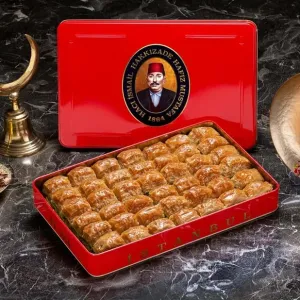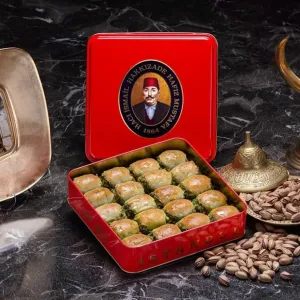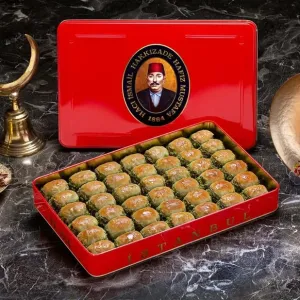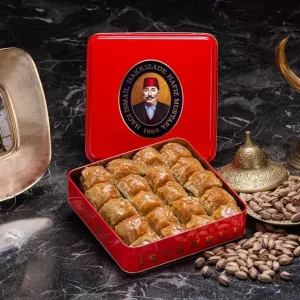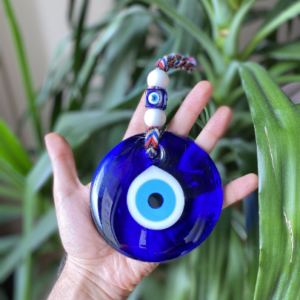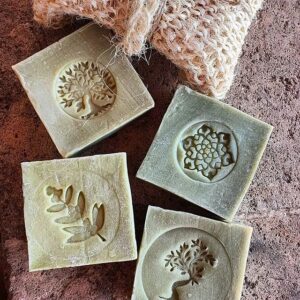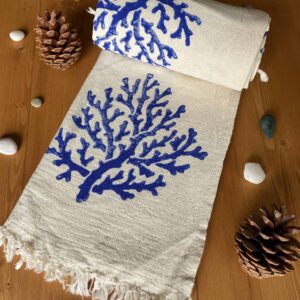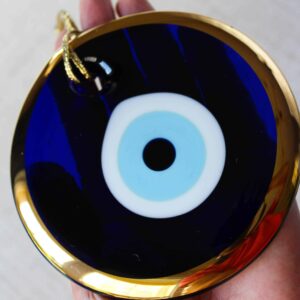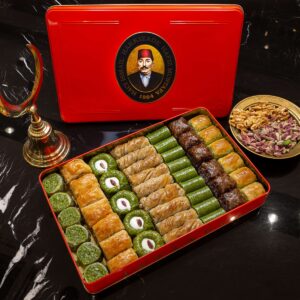Turkish Baklava
Buy Turkish baklava is a sweet pastry that has been enjoyed for centuries. Baklava turkish dessert is made of layers of thin phyllo dough, filled with chopped nuts, and sweetened with syrup or honey. The most common nuts used in Turkish baklava are pistachios and walnuts, but other nuts like almonds and hazelnuts can also be used. Baklava is a popular dessert in Turkey and is often served during special occasions such as weddings, religious holidays, and family gatherings.
The history of baklava dates back to the Ottoman Empire. The oldest Ottoman record of Turkish baklava is in the kitchen notebooks of the Topkapı Palace from the Fatih period. According to this record, baklava was baked in the palace in the month of Sha’ban in 878 AH (1473) . Baklava was also seen as the dessert of sultans and was included in state customs . By the 16th century, baklava had become a food of renown, and was eulogised by poets in lines such as this, from a verse by Nazmi of Edirne: ‘O delightful, delicate, sweet, pleasant baklava, O jewel, O sultan, of Ramazan meals.’ .
Baklava is known by different names in different parts of the world. In Greece, it is called baklava, while in Armenia, it is called pakhlava. In Iran, it is called baqlava, and in Azerbaijan, it is called pakhlava. In Arabic-speaking countries, it is called baklawa, and in Israel, it is called baklawa or baklava.
Turkish baklava is famous for its unique taste and texture. The thin layers of phyllo dough are crispy and flaky, while the filling of chopped nuts is sweet and nutty. The syrup or honey that is poured over the baklava adds a sweet and sticky texture to the dessert. Turkish baklava is often served with a cup of Turkish coffee or tea, which complements the sweetness of the dessert.
If you are looking to buy Turkish baklava online, there are many options available. Shop of Turkey offers a variety of fresh Turkish baklava, including pistachio baklava, walnut baklava, and chocolate baklava. Hafız Mustafa 1864 is a well-known hafiz mustafa baklava brand in Istanbul that offers a variety of baklava and other Turkish sweets.
Source for history: Natgeo

Turkish Baklava Nutrition Value
A 100-gram serving of baklava contains 428 calories, 29.03 grams of fat, 37.62 grams of carbohydrates, and 6.7 grams of protein . Baklava is also a good source of iron and calcium. However, it is high in sugar and saturated fat, so it should be consumed in moderation as part of a balanced diet.
How is baklava best served?
Baklava is typically served as a dessert, either on its own or with a cup of Turkish coffee or tea. It is usually cut into small diamond-shaped pieces and served on a platter or in a bowl. Baklava can be served at room temperature or slightly warmed up in the oven. Some people like to sprinkle chopped nuts or powdered sugar on top of the baklava before serving. Baklava can also be served with ice cream or whipped cream for an extra indulgent treat.
Turkish Baklava Types
Turkish baklava comes in various types, each distinguished by its unique ingredients and preparation. Some popular types include:
- Antep Baklava: Originating from the city of Gaziantep, it often contains pistachios and is renowned for its rich and distinct flavor.
- Saray Baklava: This type is often associated with the Ottoman palaces and is characterized by its layers of finely chopped walnuts or pistachios.
- Havuç Dilim Baklava (Carrot Slice Baklava): Named for its carrot-like slices, it typically contains a filling of walnuts or pistachios.
- Cevizli Baklava (Walnut Baklava): Filled with chopped walnuts, this type offers a slightly different taste compared to those with pistachios.
- Fıstıklı Baklava (Pistachio Baklava): Featuring layers of pistachios, it’s a popular variation known for its vibrant green color.
- Sütlü Nuriye: This baklava variant includes milk in its preparation, resulting in a softer and creamier texture.
- Cezerye Baklava: Originating from the city of Mersin, it contains caramelized carrots, nuts, and coconut, providing a unique taste.
How long can baklava last before it spoils?
The freshness of baklava can vary depending on factors like storage conditions and the ingredients used. However, as a general guideline:
- Room Temperature: Baklava can be kept at room temperature for about 1 to 2 weeks if stored in an airtight container. Make sure it’s in a cool, dry place away from direct sunlight.
- Refrigeration: If you want to extend its freshness, you can store baklava in the refrigerator. Properly stored, it can last up to 2 to 4 weeks. Again, use an airtight container to prevent it from absorbing any odors from the fridge.
- Freezing: Baklava freezes well. If you need to store it for a more extended period, you can freeze it for up to 2 to 3 months. Wrap individual pieces or the whole batch tightly in plastic wrap and then in aluminum foil to prevent freezer burn.
Remember that the syrup in baklava helps keep it moist, but excessive exposure to air can cause it to lose its freshness. Always store it in airtight containers or wrap it securely to maintain its texture and flavor. Additionally, the type of nuts used can affect shelf life, as nuts with higher oil content may turn rancid more quickly.

